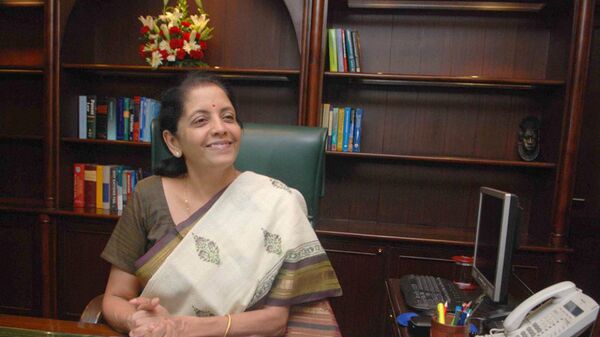Defending the proposals to revive the economic growth in her budget, Indian Finance Minister Nirmala Sitharaman has questioned the policies adopted by former Prime Minister Manmohan Singh to revive the Indian economy in the aftermath of the global economic slowdown in 2008.
Referring to the stimulus packages announced by previous Congress-led United Progressive Alliance (UPA) government in December 2008 and January 2009 to boost consumption, Sitharaman on Monday said: “We shall not make mistake of splurging that happened then”.
In her first post-budget interaction with industry at the Indian Chamber of Commerce and Industry (FICCI), Sitharaman, without naming Manmohan Singh or Congress, said:
“The experiences of the last time, when India had a real tough economic situation and the call taken at that time and the levels of fiscal deficit caused by the splurging with which the economy was expected to reach at a better level are all fresh in our minds”.
By pump priming the economy, Sitharaman meant increasing investments to revive growth.
In 2008, the sub-prime crisis in the US led to global wilting of the financial markets triggering an acute liquidity crisis across the globe. India, too, faced the heat.
The then government led by Manmohan Singh announced two stimulus packages, one after another in December 2008 and January 2009, to revive the investment cycle. The packages included excise duty cuts, measures to boost exports, enhanced funding for non-banking finance companies, and incentives to the auto sector.
With this, the investment cycle restarted and consumption went up, thereby jacking up growth too, which more than doubled from 3.1 percent in 2008-09, to 7.9 percent in 2009-10, and 8.5 percent in 2010-11.
However, on the other hand, the tax giveaways in the stimulus led to a widening fiscal deficit that zoomed to 6 percent in 2008-09, 6.46 percent in 2009-10, 4.8 percent in 2010-11, and 5.91 percent in 2011-12, against 2.5 percent in 2008-09 – the financial year in which the stimulus was announced.
Defending her fiscal deficit projections announced in the budget for 2020-21 at 3.5 percent, Sitharaman said: “We are also willing to spend a lot of money on the economy. The money being spent now is with clear picture of asset creation, and public asset creation”.
Claiming that the resources generated have got a clear deployment target in the budget, Sitharaman cited the example of a medical equipment cess. “Funds raised from cess on medical equipment will be used to build medical infrastructure at districts which lack them”.



